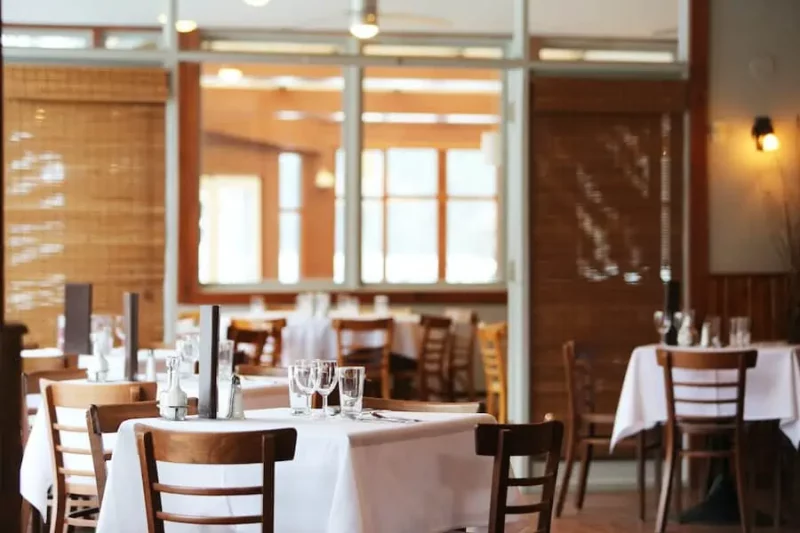Do you dream of owning your own restaurant? Have you ever gone out to eat and thought, “I could run this better?” Then, what are you waiting for? Edmonton is ripe with opportunities for budding business owners, and the restaurant industry is no different. If you want to get your toes wet in the food industry, then join us as we look at how to get involved in restaurant ownership and some key considerations to ensure your restaurant is meeting your customers’ needs.
Getting Into The Food Industry
There are many ways to get started in Edmonton’s food industry. You could start working for the type of business you eventually want to run, dedicate yourself to the cause, and climb your way up the ladder until you’re management. It’s a great way to gain experience from the ground, but it’s not the same as owning your own place.
The second option is to start up your own place from scratch. You can pick between starting a food truck, getting into franchises, or building a restaurant from the bottom up. You will face all the trials and tribulations of a new business and building your reputation and customer base, but you’ll have more control over everything, including the food you offer and whether you hire additional workers.
The third option is to purchase an Edmonton restaurant. There could be any reason that the current owner has decided to sell, from moving on to retirement to switching industries. With this, you are starting with an already established restaurant or a fully furnished building ready to host your new idea. You will likely be taking over a fully functioning establishment with staff, procedures, and a client base. You will be the big boss, but you need to be careful not to ostracize current staff, run off customers, or make too many changes all at once.
Setting And Following A Vision
Once you own or manage your own place, you can create your own vision to help it grow. If you are working with a pre-existing staff, you will need to take your time introducing changes. Too many changes at once can be overwhelming for staff, leading to mistakes and a toxic work environment. Keep your staff involved, being transparent with ideas and changes and accepting feedback to help keep the restaurant a great place to work while following your vision.
If you get into franchising and management, you will have more restrictions on how things are done. It varies by owning company or the actual owner, but you will likely have some set guidelines to follow as you run the business but implement them how you choose.
Considering Your Customers
Running a restaurant isn’t a walk through the park. You have to maintain finances, negotiate with suppliers, and deal with Health and Safety inspections. Restaurants are held to strict standards to maintain safe, healthy working and eating environments. Another thing you must focus on is keeping customers coming back for more. Let’s take a look at some top tips for customer satisfaction.
Safety
Your customers don’t want to get sick when they are out to eat. Restaurants have a lot of hazards, including the risk of slips and falls. Work with your floor crew to mitigate any risks and protect your customers so they feel comfortable returning. Other safety concerns for your customers can look like:
- Proper lighting to see any dips and steps
- Rugs in entry ways
- Immediate address of wet floors
- Pot holders under hot dishes in case clients need to shift things on the table
- Proper warnings for spicy foods and allergens
- Properly maintained furniture, sidewalks, and parking lot
- Bathrooms with no gaps in the stalls
Accessibility
Disabled patrons often have to contend with a somewhat hostile, inaccessible society. By placing an emphasis on accessibility, you’re opening yourself up for more patrons to enjoy your restaurant— and spread the word. Accessibility can look like many things:
- Alternative menus with larger print for the visually impaired,
- Braille menus for the blind,
- Ramps with handrails and safe inclines for those with mobility issues and wheelchair users
- Disabled access parking that allows space for wheelchair ramps and easy access to your doors.
- An alternative, allergen-friendly menu that lists out what dishes contain what allergens or are top allergen-free. Dairy-free and gluten-free alternatives for menu items.
- A friendly and accommodating staff
- Accommodations for service dogs
- Automatic door openers at your entrance and into the bathrooms
Variety and Specials
While you should have some staples on your menu, don’t be afraid to mix things up from time to time or run specials with limited-time dishes. Customers love a variety of dishes from restaurants they can trust, and it lets your cooks stretch their creative muscles. Coupons and specials are also a great incentive for new and repeat business.
Conclusion
Running a restaurant is a risky yet rewarding endeavor. You’ll find new friends in your employees and regular customers and have fun adjusting the menu and finding new and exciting ways to drive business. We hope this guide helps set the fire under your feet so you can take those first steps into the Edmonton food industry!










